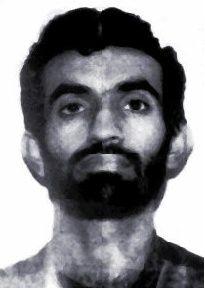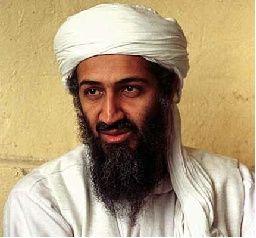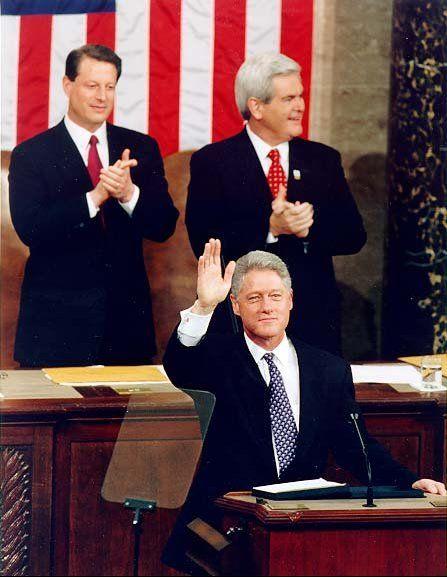America's Greatest 20th Century Presidents (36 page)
Read America's Greatest 20th Century Presidents Online
Authors: Charles River Charles River Editors

The Oslo Accords called for the IDF’s withdrawal from parts of the territories in accordance with U.N. Security Council Resolution 242 over the course of a 5 year interim period, during which time the two sides were supposed to negotiate final status issues including East Jerusalem, Palestinian refugees, Jewish settlements, security, and final borders. These were deliberately left to be decided farther down the line, in order to give the parties room to generate progress and momentum during the initial steps that would make it more politically feasible for both sides to make tough choices.
From the beginning, the Oslo Accords began suffering serious breakdowns. Israel’s Likud party and other conservatives opposed the negotiations, which had barely passed Israel’s Knesset. They also pointed to statements made by Arafat to Palestinian audiences in which he compared Oslo to a strategic truce signed by Muhammad with the tribe of Quraish that allowed Muhammad time to build up strength to vanquish his adversaries. Skeptical Israelis thus believed the Palestinians’ goal was still to destroy Israel, and that the Palestinians simply viewed this as part of a gradual process that would make the end goal easier to accomplish. Meanwhile, Palestinians were skeptical that the Israelis would honor their side of the agreements, seeing resistance from conservatives and religious settlers in Israel as capable of derailing the Oslo Accords.
Moreover, the violence intensified after the Oslo Accords were signed. Most observers assumed that the violence was being carried out by extremists who hoped to stop the peace process, including Hamas and extreme Jewish settlers, but again both sides were skeptical that the other side was taking proper steps to guarantee security. The Palestinian Authority had renounced terrorism, but many in Israel now believed it was endorsing attacks, implying that Arafat and his group were complicit.
Worst of all, two years after the handshake, Rabin was shot and killed by a right-wing Israeli who opposed the agreements. Rabin’s death was a huge blow to the Oslo Accords, even though his successor, Shimon Peres, attempted to continue moving the process forward. In May 1996, Peres lost the elections, as Likud leader Benjamin Netanyahu became Israel’s new prime minister. An ardent opponent of the Oslo Accords, Netanyahu did agree to certain withdrawals after signing the Hebron Protocol and the Wye River Memorandum, but friction among his governing coalition made it impossible to continue withdrawals
Clinton kept trying to broker peace efforts between the two sides during his second term, most notably when he invited Arafat and Israeli Prime Minister Ehud Barak to Camp David in July 2000 in an attempt to work out a deal on the final status issues. In a prepared statement before the negotiations began, both sides agreed “that negotiations based on U.N. Security Council Resolutions 242 and 338 are the only way to achieve such an agreement,” and that both sides “understand the importance of avoiding unilateral actions that prejudge the outcome of negotiations and that their differences will be resolved only by good faith negotiations.”
No peace deal was ever reached at Camp David in 2000, which led to finger pointing on all sides. Barak, Clinton, and some American negotiators like Dennis Ross claimed Arafat, who rejected Barak’s offer without making a counteroffer, was too intransigent. That viewpoint was echoed by Nabil Amr, a Palestinian Authority Minister in 2000. Others blamed the Israelis and Americans, including the Palestinians and prominent political observers like Norman Finkelstein. Barak’s Foreign Minister, Shlomo Ben-Ami, would later say that if he was a Palestinian he would have rejected the offer too.
Like every president before him, Clinton ultimately failed to break the impasse, which unquestionably gnawed at him. Clinton would later write, “I regret that in 2000 Arafat missed the opportunity to bring that nation into being and pray for the day when the dreams of the Palestinian people for a state and a better life will be realized in a just and lasting peace."
Somalia
10 years after American Marines were killed in the notorious barracks explosion in Beirut during Lebanon’s Civil War, American special operations forces were sent to Somalia at the behest of Clinton as part of “Operation Gothic Serpent”. The goal set for the special forces was to capture Somali warlord Mohamed Farrah Aidid and thus prevent him from continuing to perpetrate violence.
On October 3, 1993, a small force conducted an operation in Mogadishu to arrest two of Aidid’s leaders, but they were pinned down as they sought their way out. In the attack, 18 Americans were killed, and the force lost two Black Hawk choppers. The attack later formed the basis for the movie
Black Hawk Down
, but in its immediate aftermath, Clinton ordered the withdrawal of American forces days later. Somalia seemed to have taught Clinton a lesson in unilateralism, because he refused to stop the genocide in Rwanda the following year. It seemed he had learned that the U.S. could not intervene anywhere at anytime.
Chapter 8: Terrorism
In the wake of 9/11, Clinton’s response to a string of terrorist acts, particularly by Osama bin Laden’s al-Qaeda, was more heavily dissected with the benefit of hindsight. In fairness to Clinton, however, it was difficult to truly assess the terrorist threat until 1998.
The 1993 Bombing of the World Trade Center
In September 1992, Ramzi Yousef traveled to the United States from Pakistan and began working on a 1,300 pound bomb with the assistance of several co-conspirators, including the “Blind Sheikh,” On the morning of February 26, 1993, Yousef and Eyad Ismoil drove the bomb in a rented van to a parking garage under the World Trade Center. Just after noon, the powerful bomb exploded underneath the Twin Towers, killing six, injuring hundreds, and scaring thousands. Yousef had hoped the force of the explosion would knock one tower into another, causing them both to collapse, which would have been a colossal tragedy. By the time investigators traced the clues back to Yousef, he had escaped back to Pakistan.

Yousef
Ultimately, it was not the result of the attack but the men behind it that made it so noteworthy. Yousef had trained in Afghanistan in camps run by Bin Laden’s al-Qaeda, but his bombing operation was largely unaffiliated with that group. However, Yousef was the nephew of Khalid Shaikh Mohammed, who would mastermind the 9/11 plot, and who provided financing for Yousef’s 1993 bombing. After bombing the World Trade Center, Yousef eventually headed to the Phillipines to work with his uncle on “Project Bojinka,” a plot to blow up several airliners simultaneously as they made intercontinental flights. Khalid Shaikh Mohammed later evolved Project Bojinka into the 9/11 plot. Eventually, Yousef was captured in 1995 by Pakistani authorities and extradited to the U.S., where he is now jailed in the Supermax facility in Colorado.
The 1998 Embassy Bombings
When Hussein invaded Kuwait in 1991, Iraqi forces nearly reached Saudi Arabia’s oil fields, which was certainly a major impetus for intervention by the Western coalition. But they weren’t the only ones who aimed to protect Saudi Arabia during that fighting. Islamic mujahideen had recently fought against the Soviets in Afghanistan, including Osama bin Laden, who asked Saudi Arabia’s King Fahd to allow his group of holy fighters to resist the Iraqis. When Fahd refused, bin Laden angrily spoke out against the Saudis, eventually leading to his and al-Qaeda’s expulsion. Bin Laden was also ostensibly upset that the Saudis had relied on the West; when he issued a fatwa against the U.S. in 1998, he called on Muslims to murder Americans across the globe because of the fact American troops were stationed in the Arabian Peninsula near Islam’s holiest sites, Mecca and Medina.
In 1998, al-Qaeda pulled off one of their signature terrorist attacks, almost simultaneously bombing two United States embassies in East Africa, murdering a dozen Americans and hundreds of Africans. In response, President Clinton ordered cruise missile strikes on terrorist targets in Afghanistan and Sudan. This could have gone better, but it is always a little silly to blame the person giving the order rather than the generals or even the possibility of accident. The first target was a pharmaceutical company in Sudan strongly suspected of helping Osama bin Laden in presumably manufacturing and producing chemical weapons. The only criticism perhaps is that Clinton had not, so far as we know, ordered more stringent review of what was in those targets. The second target, of course, was Bin Laden's own terrorist training camps in Afghanistan; these camps were funded by a variety of Saudi and other anti-Western sources.

Bin Laden
In the aftermath of 9/11, Clinton and former officials within his administration sought to protect their national security reputations against charges that they had been soft on terror and treated it as a police enforcement problem more than as one befitting a military response. In a 2006 interview with Fox News, when Clinton was asked why he had not “put Bin Laden and al-Qaida out of business", he became visibly agitated and angrily responded, "At least I tried. That's the difference [between] me and some, including all of the rightwingers who are attacking me now. They ridiculed me for trying. They had eight months to try. They did not try. I tried. So I tried and failed." Clinton also claimed he at least had a plan in place to kill bin Laden, adding, “I got closer to killing him than anybody has gotten since. And if I were still president, we'd have more than 20,000 troops there trying to kill him. Now I never criticised President Bush, and I don't think this is useful. But you know we do have a government that thinks Afghanistan is one-seventh as important as Iraq."
Chapter 9: Slick Willie
Reelection

Clinton, Gore, and Gingrich during the 1997 State of the Union Address
Governor Clinton had already acquired the nickname “Slick Willie” during his time in Arkansas, but it was during his second presidential term that he pulled off some of the greatest political escape acts.
Ahead of the 1994 midterm elections, Clinton’s scandals and failed healthcare initiatives left him unpopular, and the Republicans sensed their opportunity. Before November 1994, the party released a “Contract with America,” vowing to cut down on government waste, work toward balancing the budget, and implementing tax reforms. That November, Clinton and the Democrats seemed to be thoroughly repudiated, as Republicans won a majority in both houses of Congress for the first time in 40 years.
The Republicans and House Speaker Newt Gingrich felt flush with power, only to soon find that Clinton was trying to co-opt the most popular aspects of the Republican Party’s platform and present them as his own initiatives. And to the Republicans’ chagrin, it worked. With political advisor Dick Morris, Clinton fashioned the political strategy that came to dominate his second term, “triangulation”. Through this approach, Clinton would stake the middle ground between the Democrats and the Republicans and then cast himself as being the centrist and moderate, with the most sensible and level-headed positions. At the same time, Clinton took his opponent’s popular policies, like balanced budgets, and owned them for himself